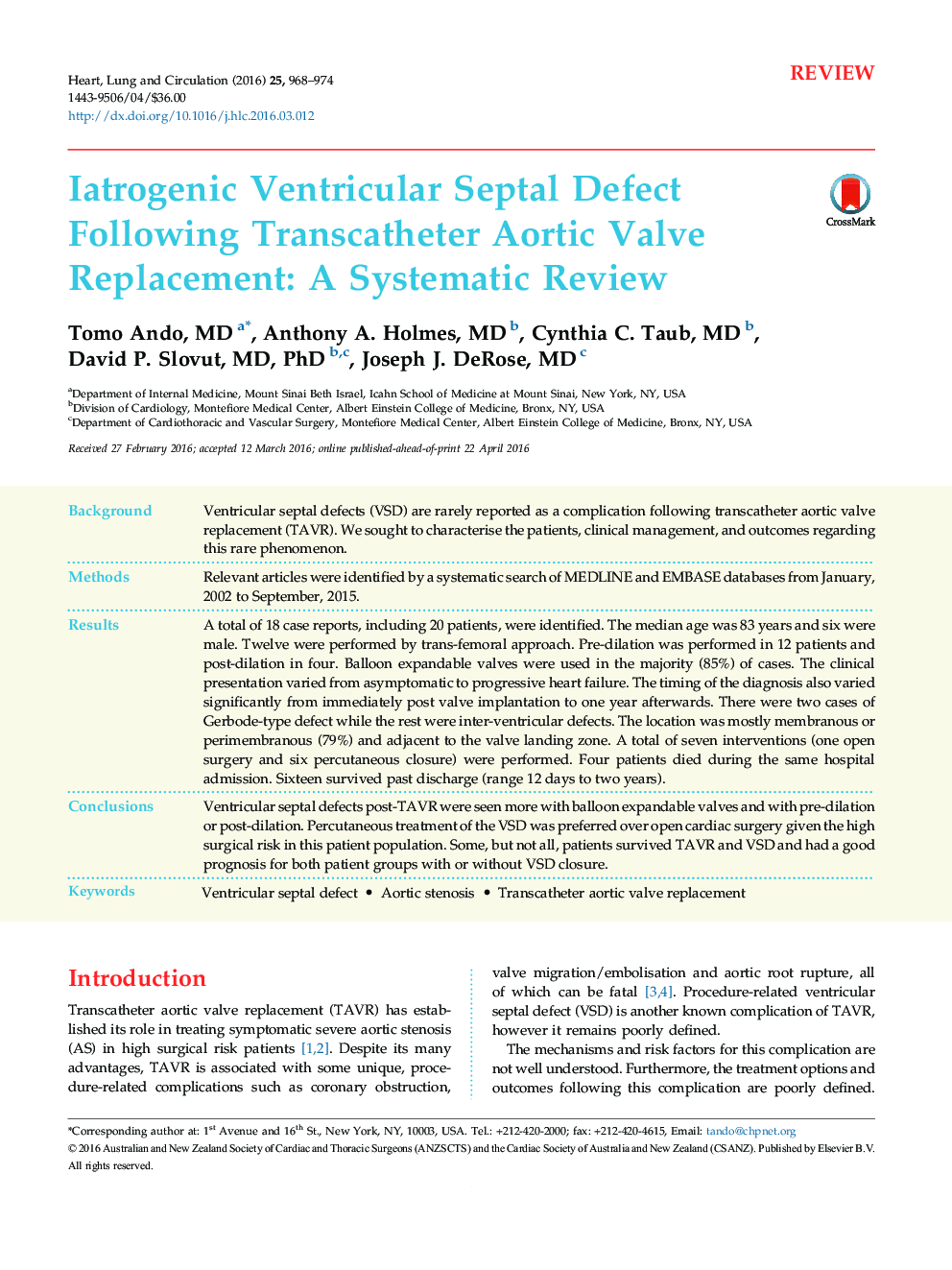| Article ID | Journal | Published Year | Pages | File Type |
|---|---|---|---|---|
| 2916568 | Heart, Lung and Circulation | 2016 | 7 Pages |
BackgroundVentricular septal defects (VSD) are rarely reported as a complication following transcatheter aortic valve replacement (TAVR). We sought to characterise the patients, clinical management, and outcomes regarding this rare phenomenon.MethodsRelevant articles were identified by a systematic search of MEDLINE and EMBASE databases from January, 2002 to September, 2015.ResultsA total of 18 case reports, including 20 patients, were identified. The median age was 83 years and six were male. Twelve were performed by trans-femoral approach. Pre-dilation was performed in 12 patients and post-dilation in four. Balloon expandable valves were used in the majority (85%) of cases. The clinical presentation varied from asymptomatic to progressive heart failure. The timing of the diagnosis also varied significantly from immediately post valve implantation to one year afterwards. There were two cases of Gerbode-type defect while the rest were inter-ventricular defects. The location was mostly membranous or perimembranous (79%) and adjacent to the valve landing zone. A total of seven interventions (one open surgery and six percutaneous closure) were performed. Four patients died during the same hospital admission. Sixteen survived past discharge (range 12 days to two years).ConclusionsVentricular septal defects post-TAVR were seen more with balloon expandable valves and with pre-dilation or post-dilation. Percutaneous treatment of the VSD was preferred over open cardiac surgery given the high surgical risk in this patient population. Some, but not all, patients survived TAVR and VSD and had a good prognosis for both patient groups with or without VSD closure.
